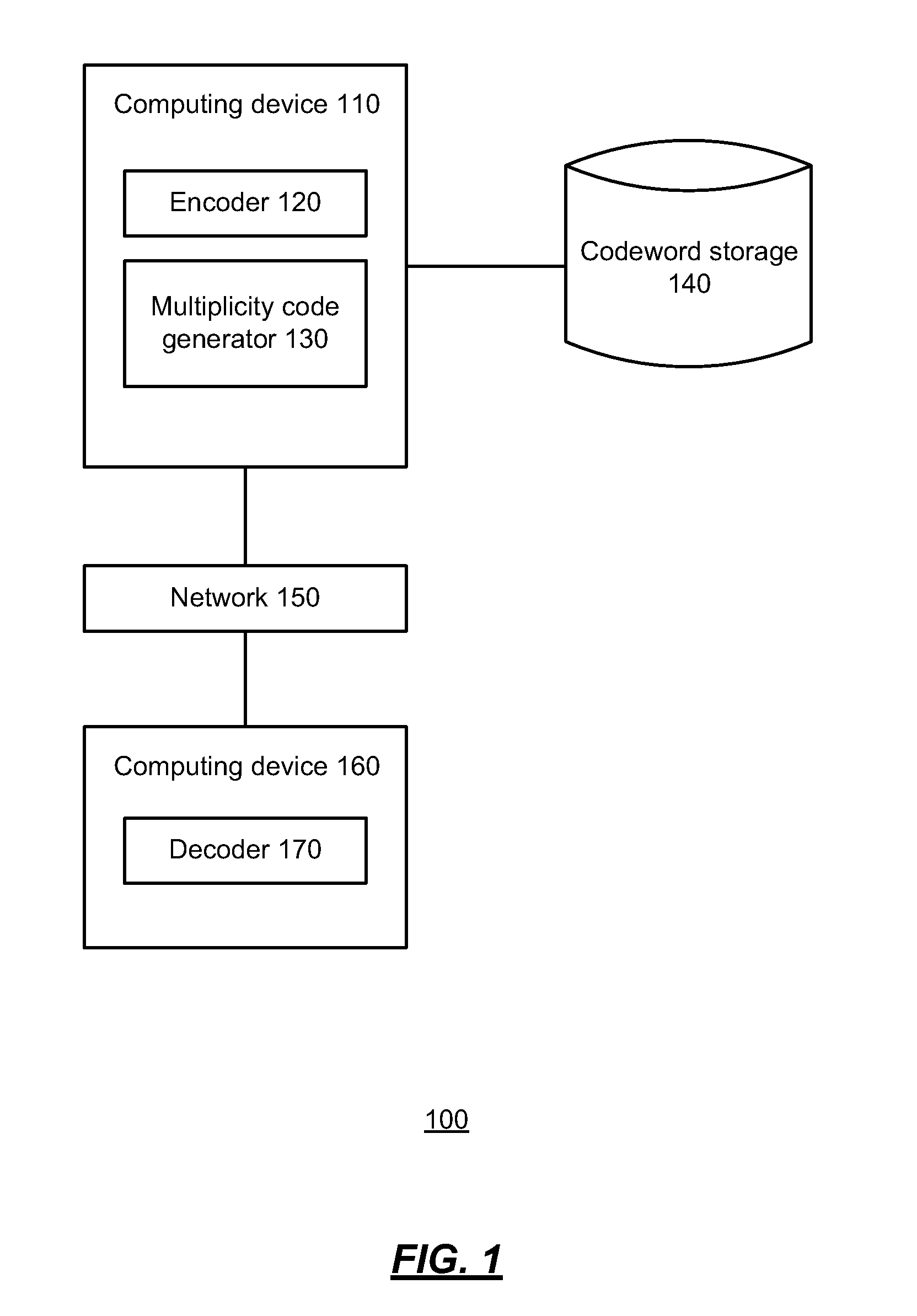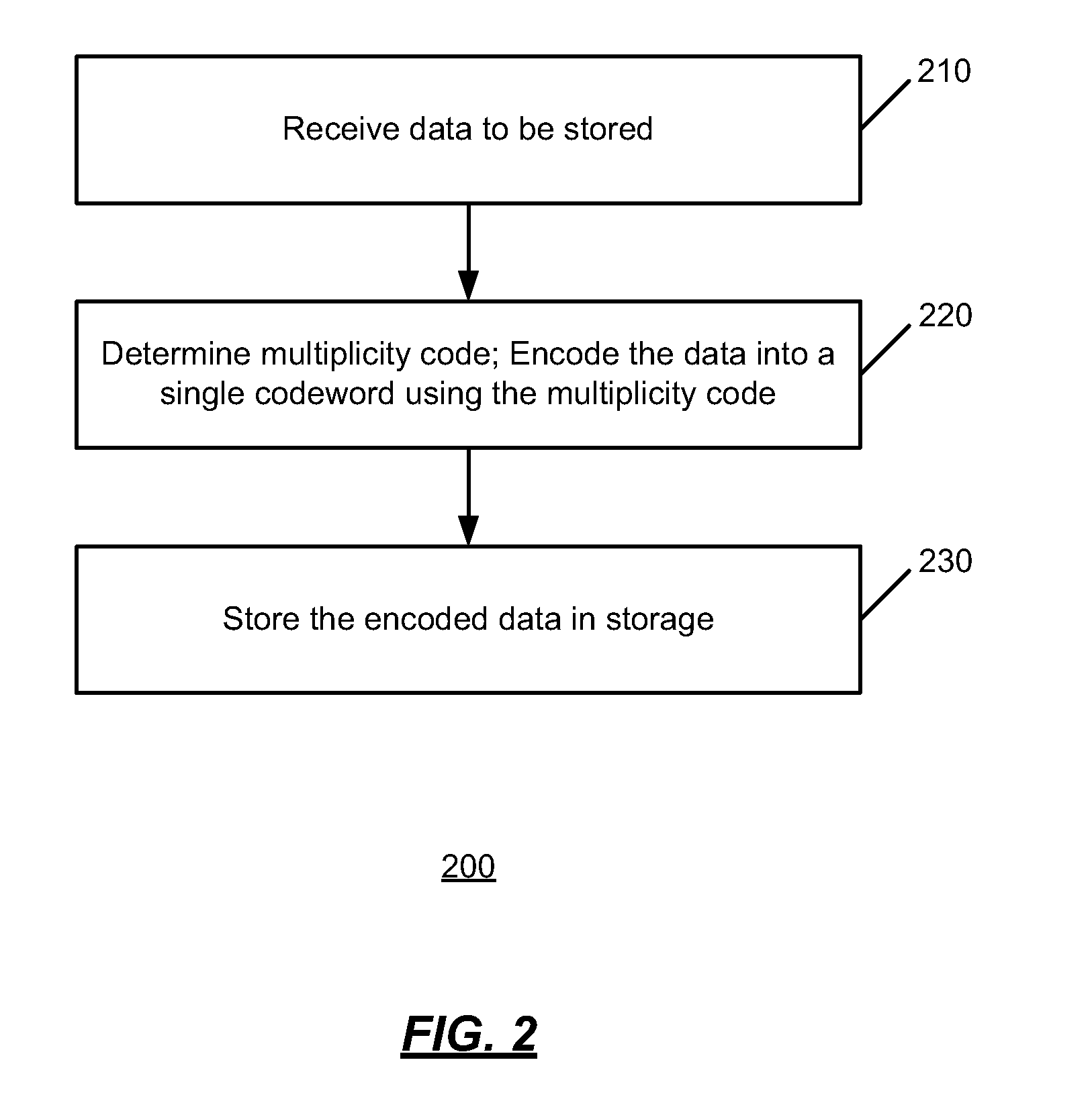High rate locally decodable codes
a local decodable and high-rate technology, applied in the field of high-rate local decodable codes, can solve the problems of poor noise resilience, difficult to design systems that perform well with respect to these conditions, and impracticality of based on standard error-correcting codes, and achieve high noise resilience, efficient random access to information, and better parameters
- Summary
- Abstract
- Description
- Claims
- Application Information
AI Technical Summary
Benefits of technology
Problems solved by technology
Method used
Image
Examples
Embodiment Construction
[0016]Error-correcting codes allow a k-bit message to be encoded into an n-bit codeword in such a way that the message can be recovered even if the codeword gets corrupted in a number of coordinates. The traditional way to recover information about the message given access to a corrupted version of the codeword is to run a decoder for the codeword, which reads and processes the entire corrupted codeword, and then recovers the entire original message. However, if one is only interested in recovering a single bit or a few bits of the message, codes with more efficient decoding schemes are possible, allowing one to read only a small number of code positions. Such codes are known as locally decodable codes (LDCs). Locally decodable codes allow reconstruction of an arbitrary bit of a message by looking only at a small number of randomly chosen coordinates of the codeword.
[0017]The main parameters of a locally decodable code that measure its utility are the codeword length n (as a functio...
PUM
 Login to View More
Login to View More Abstract
Description
Claims
Application Information
 Login to View More
Login to View More - R&D
- Intellectual Property
- Life Sciences
- Materials
- Tech Scout
- Unparalleled Data Quality
- Higher Quality Content
- 60% Fewer Hallucinations
Browse by: Latest US Patents, China's latest patents, Technical Efficacy Thesaurus, Application Domain, Technology Topic, Popular Technical Reports.
© 2025 PatSnap. All rights reserved.Legal|Privacy policy|Modern Slavery Act Transparency Statement|Sitemap|About US| Contact US: help@patsnap.com



